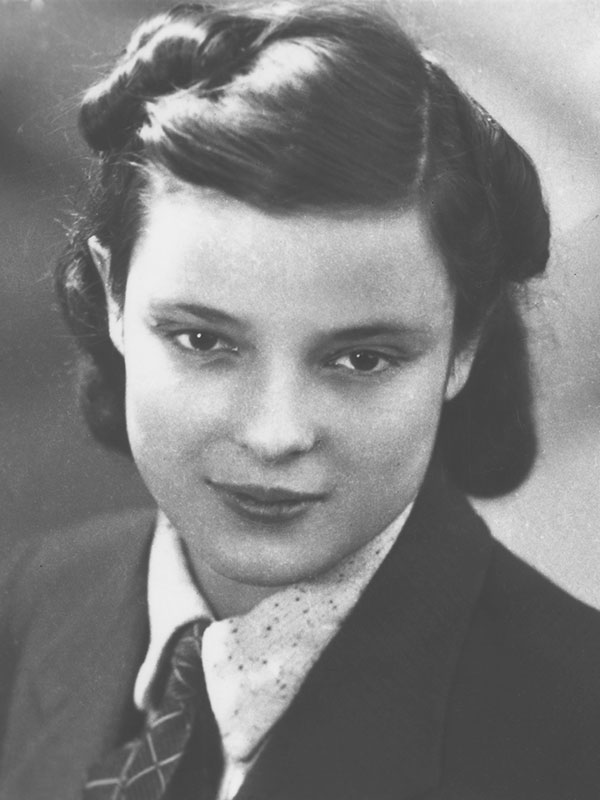
Introduction to Faye Schulman
Faye Schulman is perhaps the only known Jewish partisan photographer to capture Jewish partisan resistance on film. The Jewish Partisan Educational Foundation is honored to display her photographs.
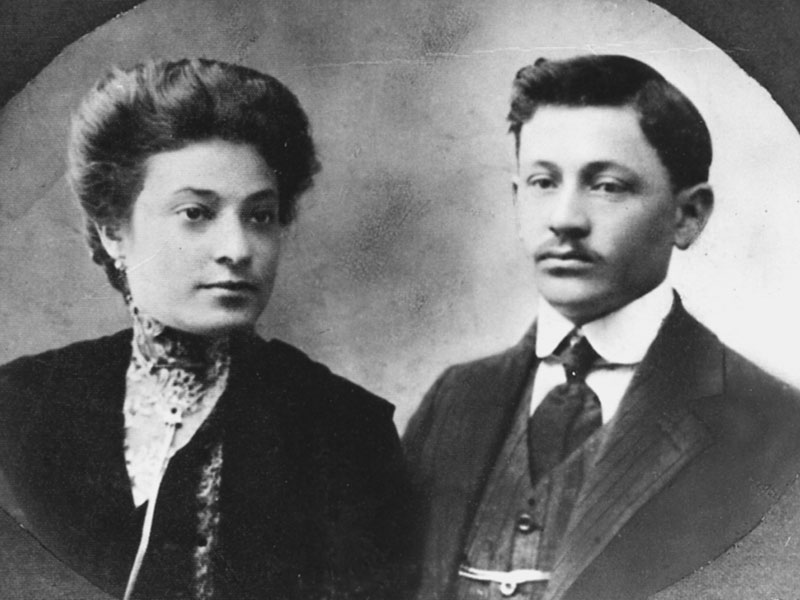
Faye's Parents
Rayzel Migdalovich and Yakov Lazebnik, Faye's parents in their wedding photograph. Faye's mother was an exceptional cook and her father was very involved in the synagogue and Jewish life. Both were murdered by the Nazis when they invaded Lenin.
Photographer: Unknown - Lenin, circa 1910
JPEF and A Partisan's Memoir, Second Story Press, page 37
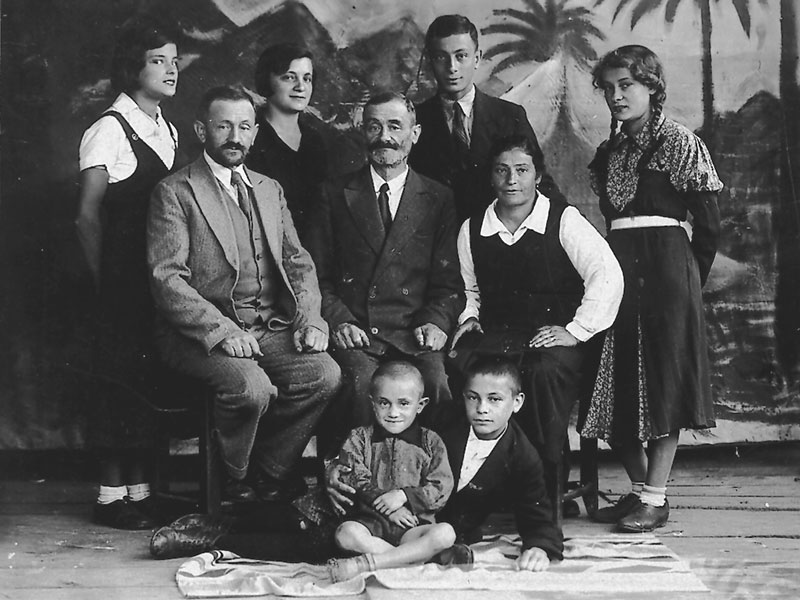
Lazebnik Family
In a photograph taken before the war, Faye poses with her parents, two sisters, and three brothers. In the middle sits Faye's Uncle Pesach Lazebnik before he and his family immigrated to Palestine. Missing from the photograph is Faye's brother Grainum, who was studying at a yeshiva in the city of Pinsk.
Photographer: Moishe Lazebnik - Lenin, mid 1930s
JPEF and A Partisan's Memoir, Second Story Press, page 41
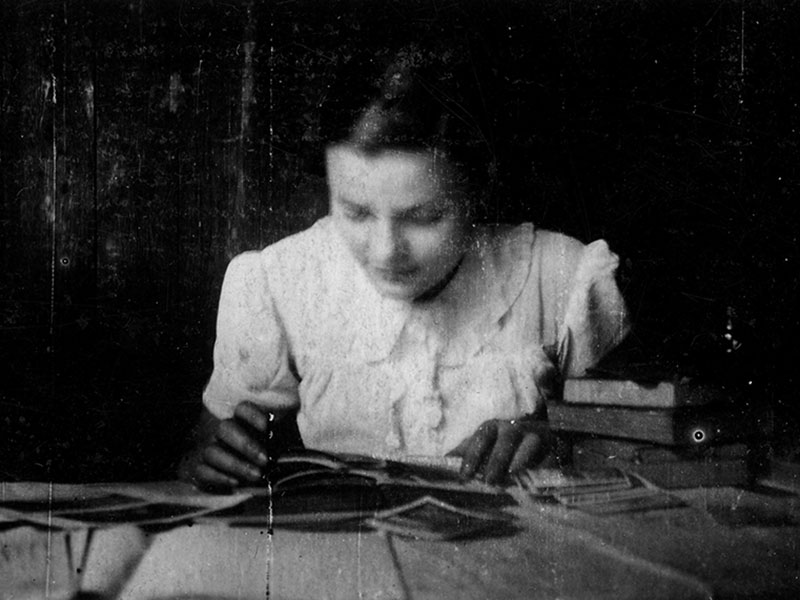
Faye at Desk
Faye's brother Moishe was the only photographer in Lenin, and when she was 10 years old, he taught her to be his helper. In 1939, Moishe opened a new studio in a nearby town and Faye's parents sent her to work with him. They never imagined that the skills she developed would save her life.
Photographer: Moishe Lazebnik - Lenin, 1940
JPEF
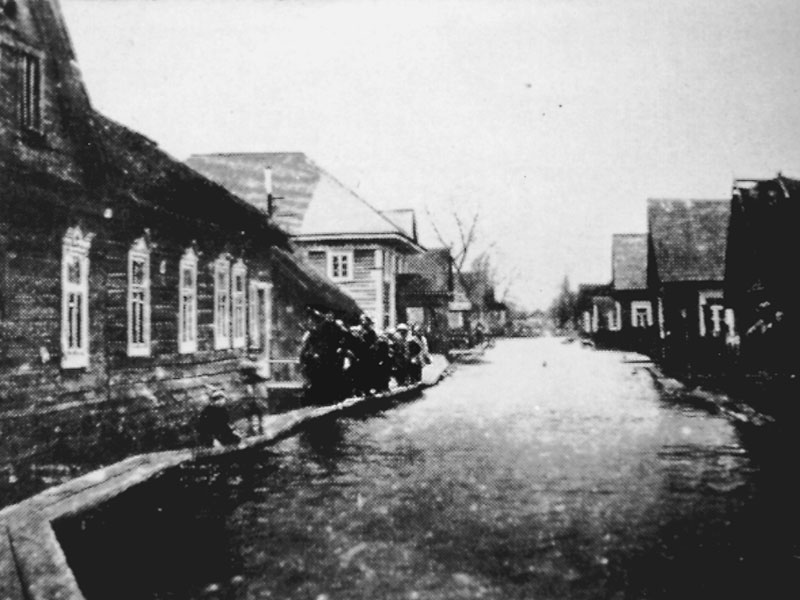
Podlipya Street
Nearly half of Lenin's 10,000 residents were Jewish. Located on the Polish side of the Sluch River that divided Poland and Russia, Lenin was predominantly Belarusian and Russian with a small Polish community. Floods plagued the town every spring.
Photographer: Moishe Lazebnik - Lenin, 1930s
Lenin Yizkor Book, page 21
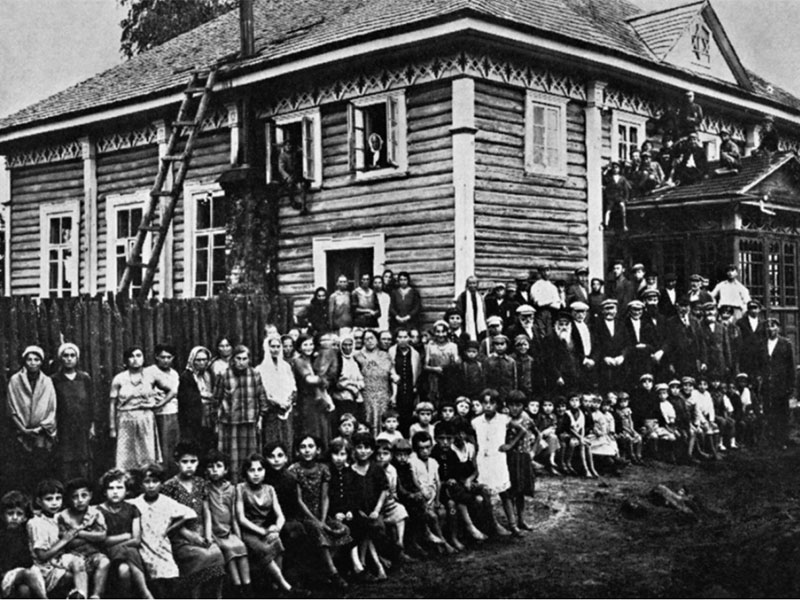
The New Synagogue
The Jewish community of Lenin had two synagogues, a cemetery and a burial society, a court for internal disputes, and a range of political organizations: socialist, Zionist and communist. Zionist youth groups provided important educational and bonding experience for Lenin's Jewish teens.
Faye recalled that there was no antisemitism in Lenin before the war.
Photographer: Moishe Lazebnik
Lenin Yizkor Book, page 7
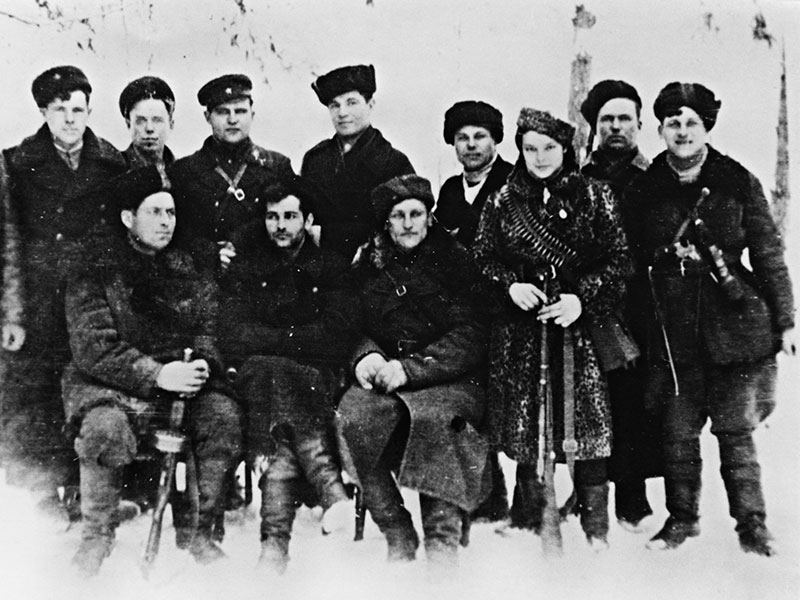
Molotova Brigade Partisan Detachment
There were many partisan groups operating throughout Nazi-occupied Poland, Belorussia, and Ukraine. Faye's group was the Molotova Brigade Shish Detachment.
To appear in this photo with her brigade, Faye adjusted the settings, put the camera on a tripod, and had someone press the shutter.
Photographer: Faye Schulman - Forests near Lenin , End of 1942
JPEF
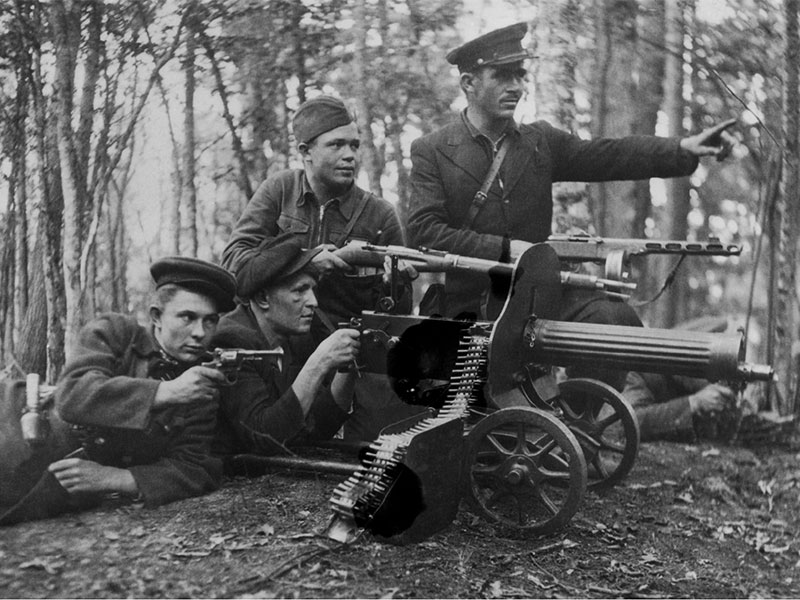
Group of Partisans with Automatic Weapon
The Molotova Brigade collected heavy artillery during raids on Nazi settlements and encampments including this polimiat.
Faye took this photograph just before these partisans were in an ambush. The partisan on the left was later wounded.
Photographer: Faye Schulman - Forest near Lenin, 1944
United States Holocaust Memorial Museum

Partisans in the Forest
Faye took this photograph of a group of Jews who were hiding in the forest after escaping ghettos and concentration camps. Not all Jews in the forest could become partisans because they had families and small children. The Jewish partisans had an obligation to protect them and help in their survival by bringing food.
Photographer: Faye Schulman - Forest near Lenin, 1943
JPEF/A Partisan's Memoir, Second Story Press, page 251

Faye with Old Friends
Faye first met these three Jewish young men when they escaped from Nazi-occupied Warsaw in 1939 and came to Lenin.
In Faye's brigade, she had to hide her Judaism because many of her fellow partisans did not like Jews. When, by chance, she came upon these Jewish men on mid-winter day, she was happy to relax her guard and be herself for a few moments.
Photographer: Faye Schulman - Forest near Lenin, Winter 1944
JPEF/A Partisan's Memoir, Second Story Press, page 139
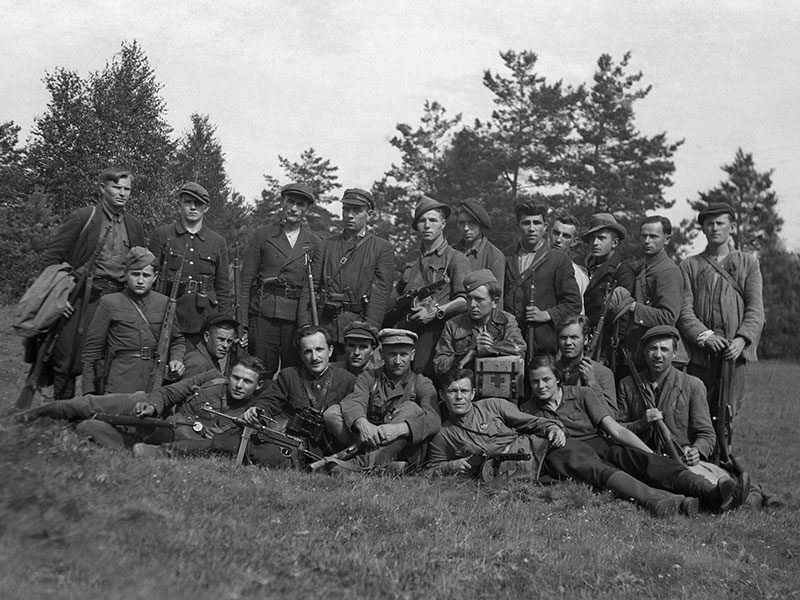
Faye with her Detachment
Faye took this photo just after she joined the Molotova Brigade. She was the only woman in her detachment.
Her ability to take photographs depended on the supplies she could access. When the partisan brigade attacked towns, she would gather all the photography supplies she could find.
Photographer: Faye Schulman - Forest near Lenin, Fall 1942
JPEF/A Partisan's Memoir, Second Story Press, page 147

Partisan Makeshift Headquarters
Women were rare in Faye's partisan detachment. Here Faye poses with another Jewish woman and their commanders following an endeavour the two women successfully accomplished. Like Faye, Rosa had survived the Nazi invasion of Lenin.
Photographer: Faye Schulman - Forests near Pinsk, early spring 1944
JPEF
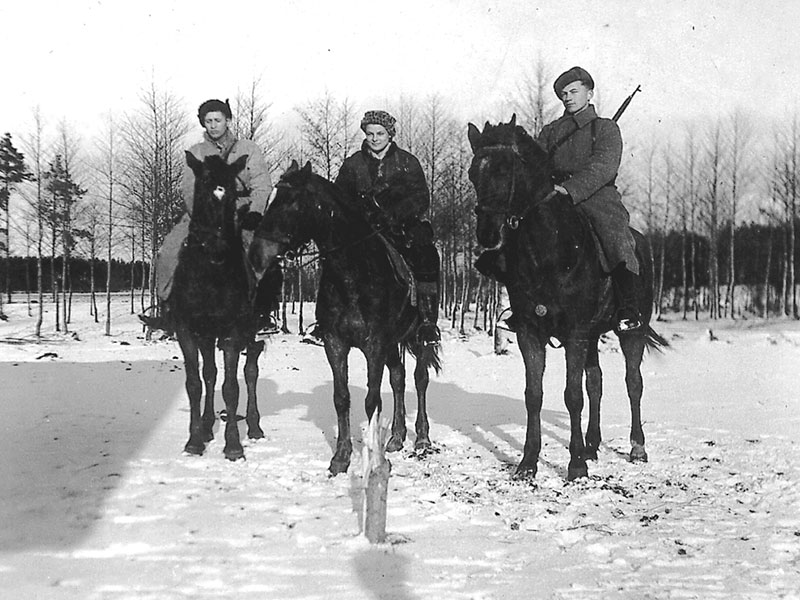
Faye and Partisans on Horseback
Taken shortly before liberation, Faye's brigade captured these horses from the Nazis. The men accompanying Faye were responsible for protecting her on a mission to take photographs. The man on the right was antisemitic. Believing that Faye was a Russian girl, he remarked, "I hate Jews" as a Jewish girl walked by them.
Photographer: Faye Schulman - Outside Pinsk, End of 1944
JPEF/A Partisan's Memoir, Second Story Press, page 143
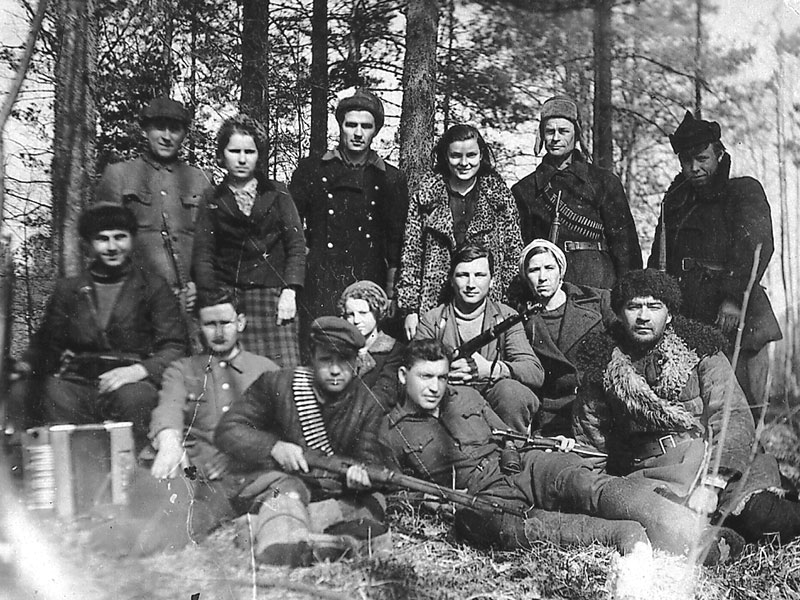
Raika, Age 9, and the Partisans
In the aftermath of a partisan raid on Lenin, a priest's wife told Faye that she was hiding a young Jewish girl. It had become dangerous to keep her and she asked Faye to take the girl, Raika Kliger, with her.
Faye's detachment did not allow children, but Raika was allowed to stay. She followed Faye everywhere except on raids.
Photographer: Faye Schulman - The Forests around Pinsk, Fall 1942
JPEF/A Partisan's Memoir, Second Story Press, page 129
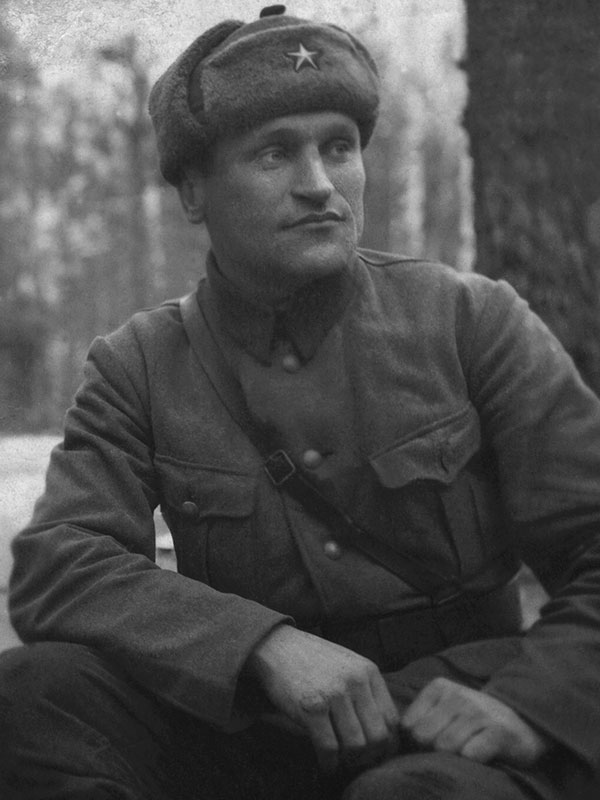
Dr. Ivan Vasilewich
Before the war, Dr. Ivan Vasilewich had worked as a veterinarian but was now one of the few doctors among the partisans. He cared for several detachments simultaneously with Faye working as his "nurse."
Faye credits him with saving her life several times.
Photographer: Faye Schulman - Molotova Brigade Base, Early 1944
JPEF
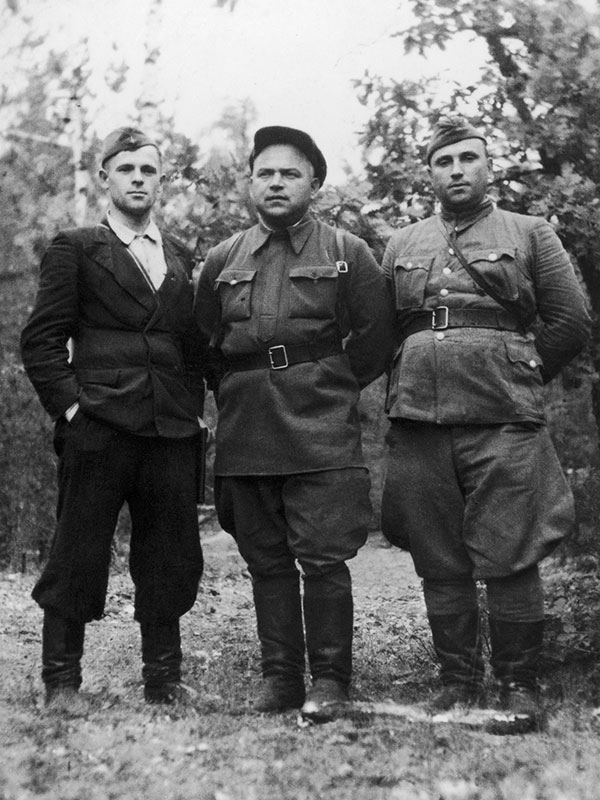
Molotova Brigade Partisan Leaders
A.E. Kleshchow, the First Secretary of the Communist Party in command of Belarus is center. To his left is the Commandeer of the Molotova Brigade, Misha Gerasimov.
Kleshchow and Faye had a close relationship despite the fact that he frequently traveled between the seven brigades he commanded.
Photographer: Faye Schulman - Forests around Pinsk, End of 1943 - early 1944
United States Holocaust Memorial Museum
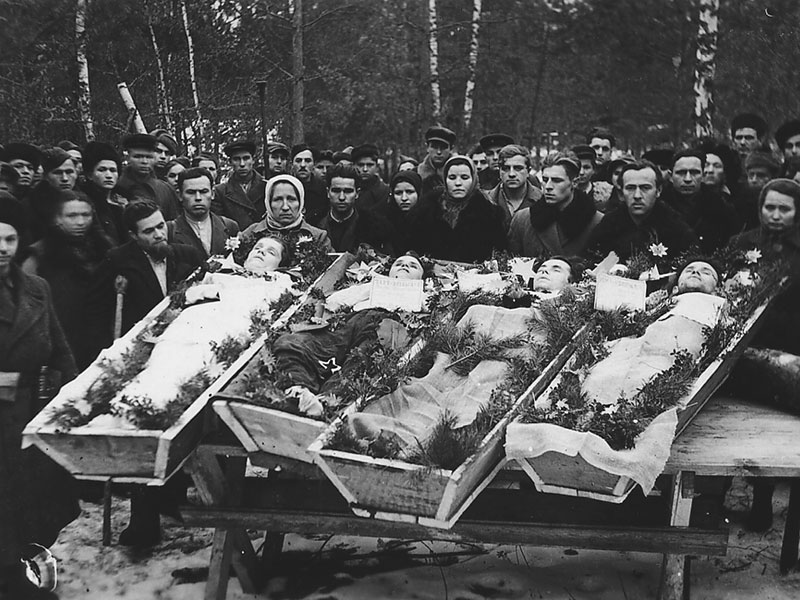
Partisan Burial
In the partisans, formal burials were rare. This photograph captures the first time the partisans of Faye's detachment were buried in caskets. Significantly, it depicts an inter-religious ceremony with two Jews and two Gentiles being buried together.
Photographer: Faye Schulman - Forests near Pinsk, Early 1944
JPEF/A Partisan's Memoir, Second Story Press, page 105
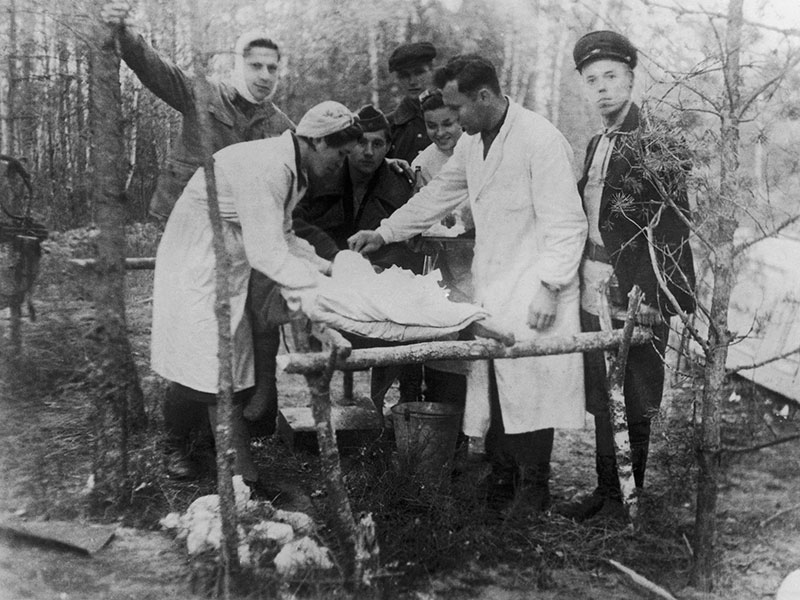
Shish Detachment Operating Table
In this hospital in the woods, the operating table was made from tree branches. When one operation was over, the operating team put the patient back on the ground and brought the next person needing treatment.
Photographer: Faye Schulman - Forests around Pinsk, 1943
United States Holocaust Memorial Museum
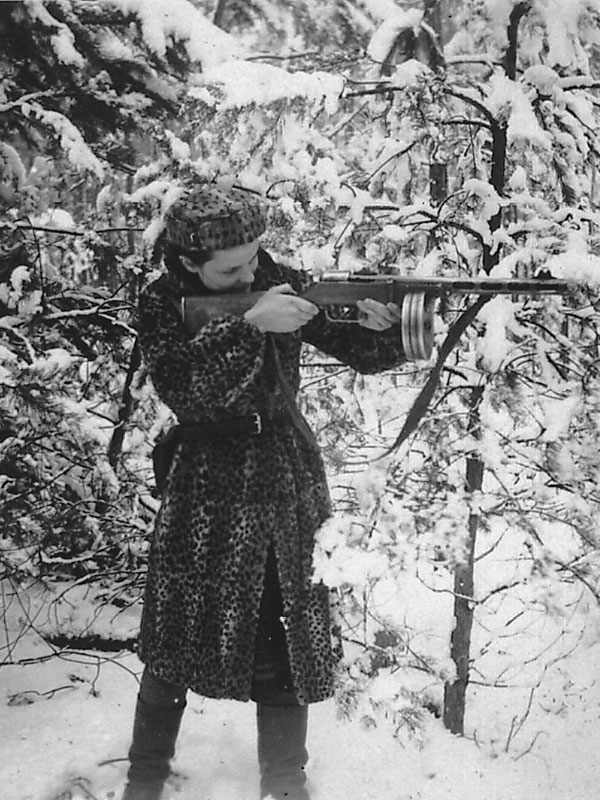
Faye and Her Rifle
Faye's hometown of Lenin had become a regional center for Nazi operations and was regularly attacked by the Molotova Brigade. Faye would take photographic and medical supplies during these raids while her fellow partisans confiscated food, clothing, rifles, and ammunition. After a raid, Faye became the owner of this PPD submachine gun.
Photographer: Faye Schulman - Forest near Pinsk, End of Winter, 1943
JPEF/A Partisan's Memoir, Second Story Press, page 115
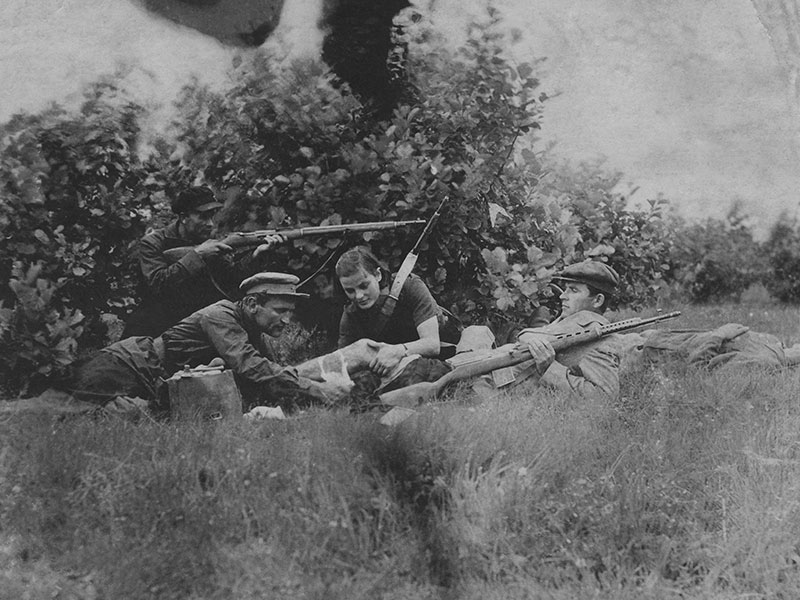
Faye and Dr. Ivan Vasilewich Tending to the Wounded
Faye always carried her Red Cross bag and was trained in all aspects of medical rescue. Here Faye and Dr. Vasilewich tend to a wounded man on the battlefield while fighting continues behind them.
Photographer: Faye Schulman - Forests around Pinsk, 1943
JPEF/A Partisan's Memoir, Second Story Press, page 109
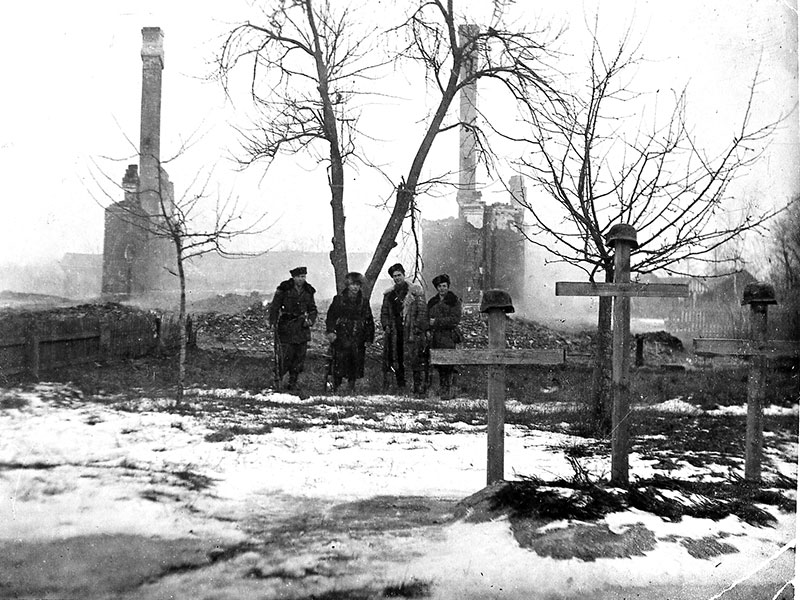
The Lazebnik Family Home
During a partisan raid on Lenin, Faye discovered that Nazis were living in her family home. Her commander gave the order to burn all of the large houses where Nazis were living. A comrade doused Faye's home with gasoline and she lit the match, burning it to the ground. On the next raid on Lenin, Faye took this picture of what remained of her family home.
Photographer: Faye Schulman - Lenin, Mid-1943
JPEF/A Partisan's Memoir, Second Story Press, page 19
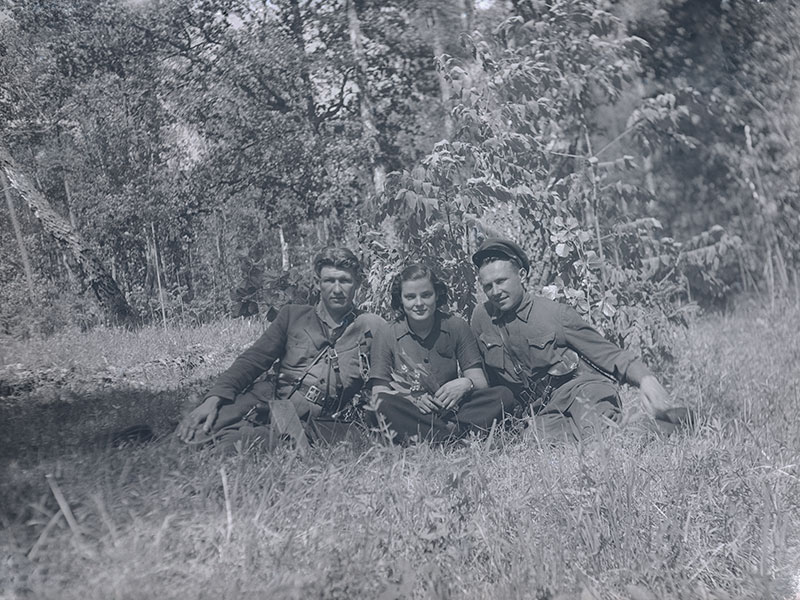
Faye and Partisan Friends Before a Mission
Faye took this photograph shortly before she and the partisan to her right embarked on a mission to deliver messages to another partisan encampment. It was dark by the time they embarked in a canoe but still, nobody predicted the tragedy that awaited them.
Photographer: Faye Schulman - Forest near Pinsk, Summer, 1943
JPEF
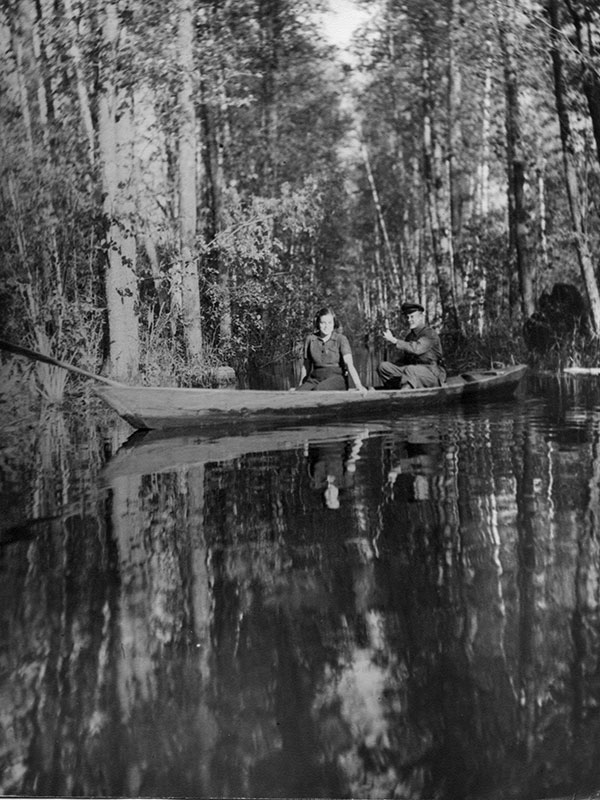
Leaving on a Mission
Faye took this picture before leaving on a secret mission by setting her camera on the bank and letting someone open the shutter.
Reaching their destination, Faye's comrade exited the canoe first, intending to pull it to the river bank so Faye would not get wet. Instead, he stepped on a mine and was killed.
Photographer: Faye Schulman - Canal in Forests near Pinsk, Summer 1943
JPEF/A Partisan's Memoir, Second Story Press, page 163

Faye, Morris Schulman and Her Two Brothers
After the war, Faye was reunited with her only surviving family members: her brothers Moishe and Grainom. Moishe's wife and children were killed.
Faye's brother re-introduced her to her future husband Morris Schulman. Nevertheless, Faye felt the incredible loss of hundreds of family members.
Photographer: Faye Schulman - Near Minsk, Fall 1944
JPEF/A Partisan's Memoir, Second Story Press, page 213
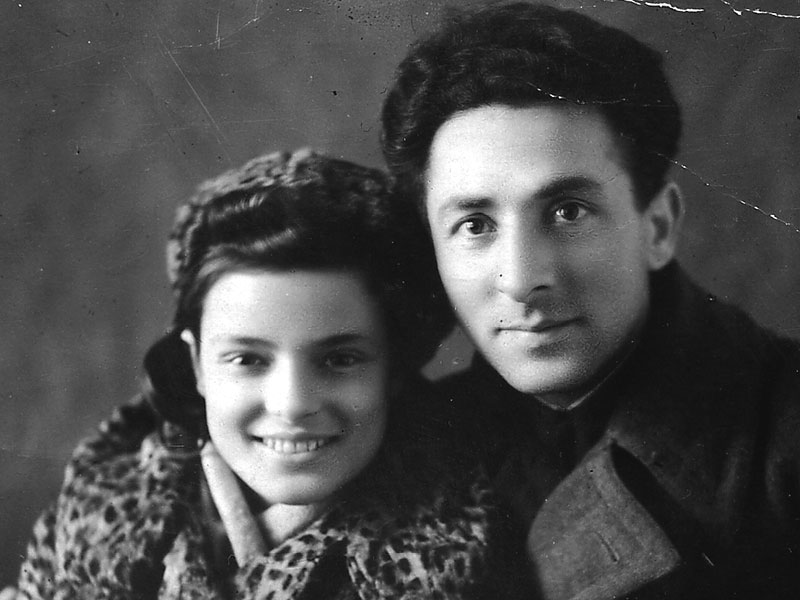
Faye and Morris Schulman
Faye and Morris married knowing each other's stories of loss - two partisans who had fought back and saved lives.
Unable to gather a minyan of ten men at the time of their wedding in Minsk, the rabbis in the Displaced Persons camp declared their union invalid. They remarried in the camp.
Photographer: Moishe Lazebnik - Minsk, End of 1944
JPEF/A Partisan's Memoir, Second Story Press, page 209

Sarah
Faye returned to Pinsk as the only photojournalist in the province. Morris became a high-ranking accountant for the government industry, and they were given a house to live in.
Other Jewish survivors, like Sarah, were not so fortunate. Having lost her entire family, she worked as a housekeeper for a Russian family who threw her out when she became ill. Morris found her on the street and carried her home where Faye nursed her back to health.
Photographer: Faye Schulman - Pinsk, 1945
JPEF
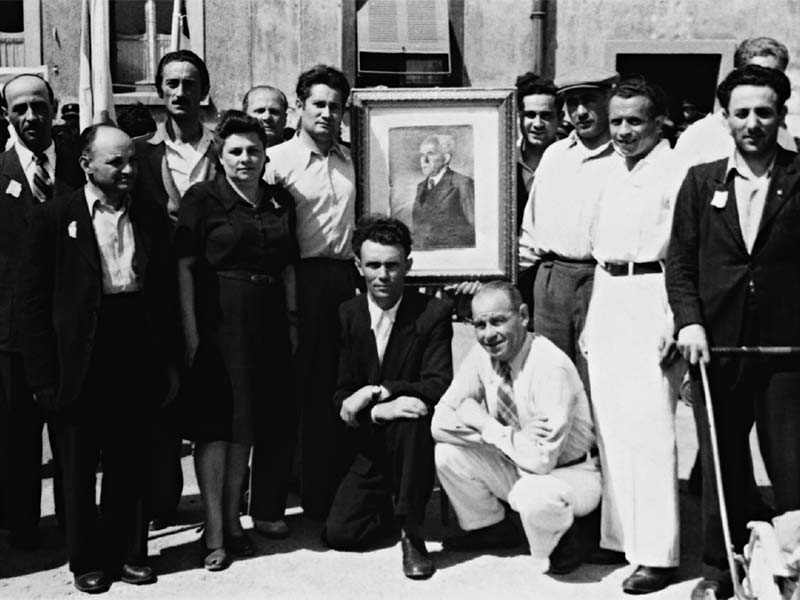
Partisan Group in Displaced Persons Camp
Faye and Morris left Poland for a Displaced Persons camp in Germany hoping to emigrate to Palestine, a country where they knew they would be accepted as Jews.
Unfortunately, Palestine was under the British Mandate at the time, and like many Holocaust survivors, they were denied entry.
Photographer: Faye Schulman - Landsburg, German, 1946
JPEF
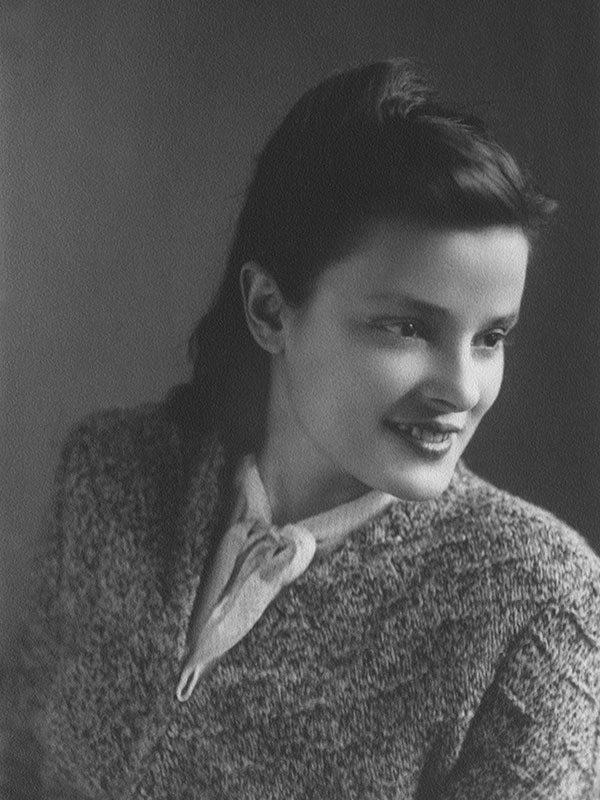
Faye in the Displaced Persons Camp
After three years in Germany, Faye and Morris grew concerned over the conflict between East and West Germany and feared another war was imminent.
They registered to immigrate to every country accepting WWII refugees. Faye, Morris, and their daughter Susan, who was born in the DP camp, were given visas to Canada.
Photographer: Unknown - Landsburg, Germany 1945-46
JPEF

Faye with her Camera
Faye used this camera throughout the war to take moving images of partisan life and the horrors of war. To keep it safe, she frequently buried the camera in the ground while out on partisan missions. Yet it continued to operate, allowing Faye to capture her incredible wartime and post war experiences on film.
Photographer: Moishe Lazebnick - Toronto, 1999
JPEF